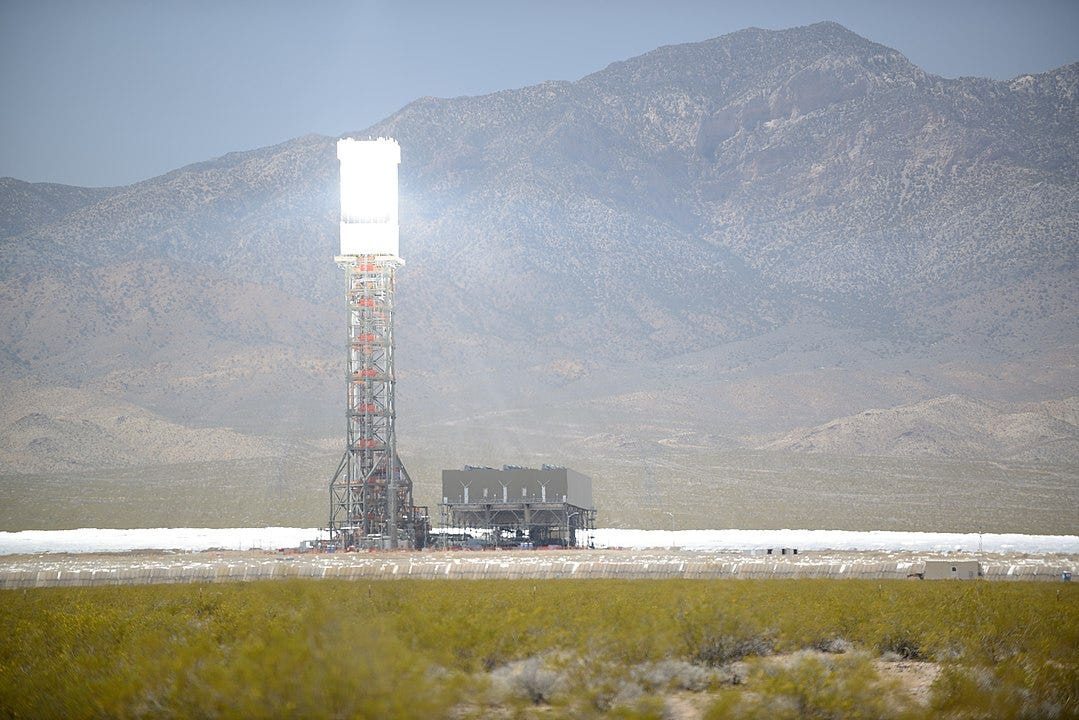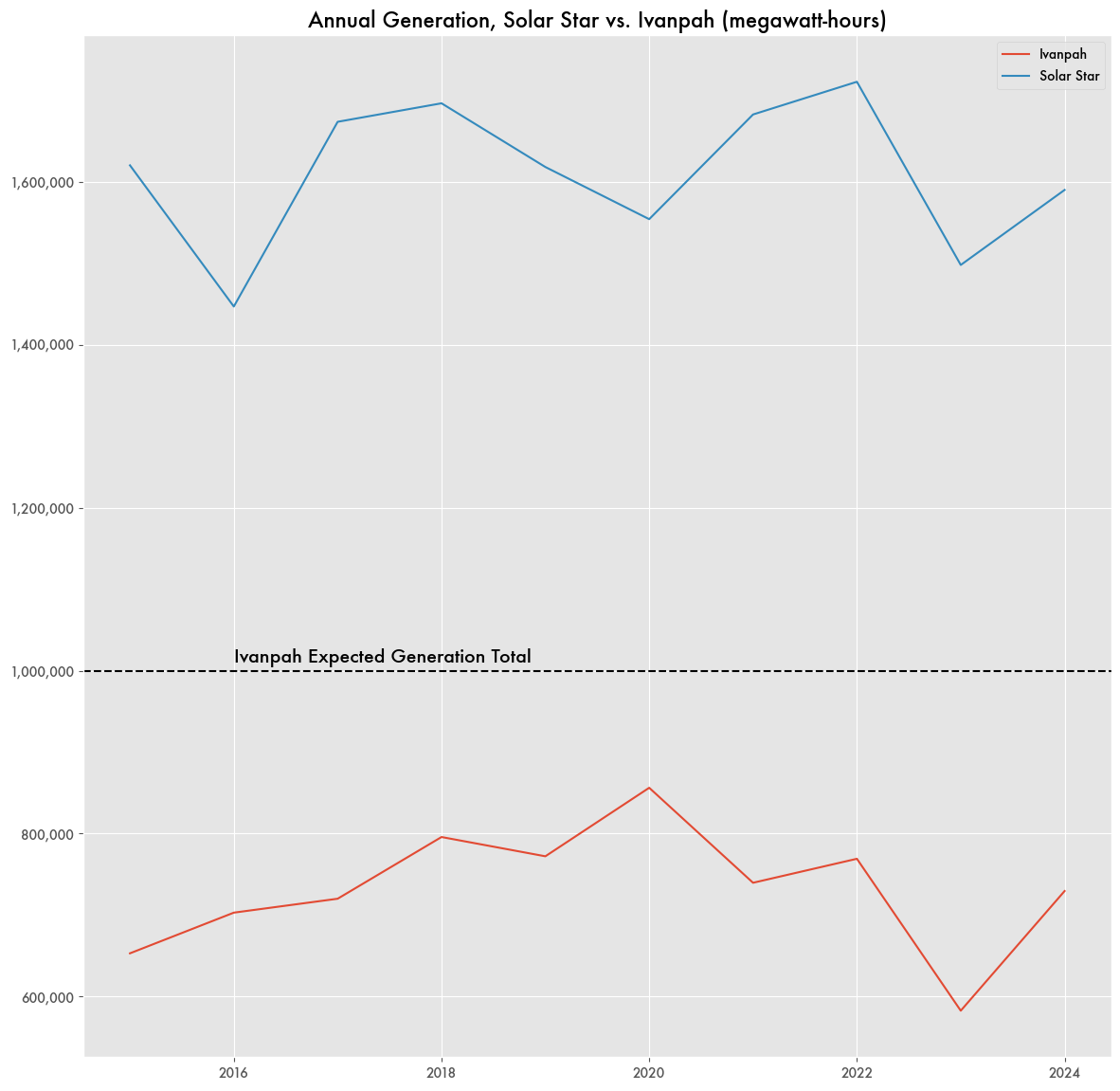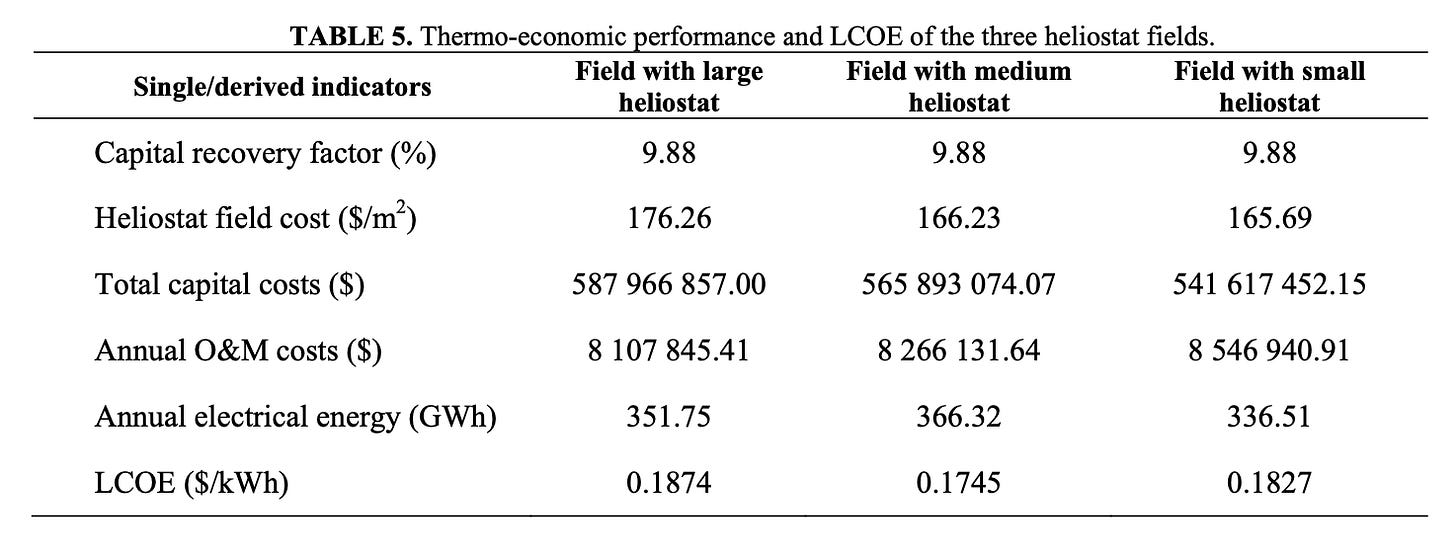Ivanpah Never Came Close to Its Generation Target

Ivanpah is the massive thermal solar energy facility in California’s Mojave Desert completed in 2014. Maybe the largest heliostat of its kind, it uses a massive array of 170,000 movable mirrors over 5 square miles to concentrate solar energy at a single tower rather than an array of photovoltaic solar panels. Rather than using batteries to store energy for times when the sun isn’t shining as some photovoltaics do, it heats water to store energy. Other heliostats heat salts to do the same thing.
But its attempt at innovation by using water for heat storage rather than molten salts may have been its downfall. It was never able to generate enough energy to make it as profitable as utility-scale photovoltaics.
Ivanpah was controversial at the time of construction for the large federal subsidies it received—a $1.6 billion guaranteed loan from the Department of Energy—which garnered comparison to the failed solar startup Solyndra.
It would enter into a contract with California energy utility PG&E to provide 1 million megawatt-hours (MWh) a year at around $200 per MWh—a hefty sum considering that the average wholesale price for electricity in California rarely gets above $100 per MWh.
In its first year, Ivanpah was met with mechanical difficulties, and it was unable to provide even 40 percent of its expected total output according to a WSJ story at the time. It would lean on natural gas turbines more than expected to help ensure the water stayed heated over night. Many birds that made their way through the area found themselves instantly vaporized by the concentrated solar energy coming off the mirrors.
A 2017 story in Bloomberg said that the facility was finally producing enough and no longer at risk of failing to meet its generation contract. Yet data from Energy Information Administration (EIA) shows the facility never really came close to the 1 million MWh mark. At most, it got to 856,301 MWh in 2020. Currently the facility is set to shut down as it will end its contract with PG&E.
While solar photovoltaics have their own issues, their prices have declined considerably and can generate more than what Ivanpah was generating. For example, the utility-scale photovoltaic Solar Star facility in Rosamond California is also about 5 square miles, cost around $300 million less to construct, yet delivers twice the total annual generation as Ivanpah.
The high cost of heliostats is reflected in their high levelized cost of electricity (LCOE). According to a paper from the American Institute of Physics, a sample heliostat tower setup could have an LCOE of between $174.5 and $187.4 per MWh.
Currently, a hybrid photovoltaic solar combined with battery generation setup would have an LCOE of $54.27 according to the EIA (2022 dollars, 2023 data).
Low Output Not Unexpected
Ivanpah’s output shouldn’t be unexpected. Other thermal solar plants have similar outputs.
The PS10 plant at Spain’s Solucar complex has a 11 megawatt capacity and produces about 23,400 MWh per year. If it was at the scale of Ivanpah’s 392 megawatt capacity, it would ostensibly generate 833,890 MWh a year—around Ivanpah’s highwater mark for output.


